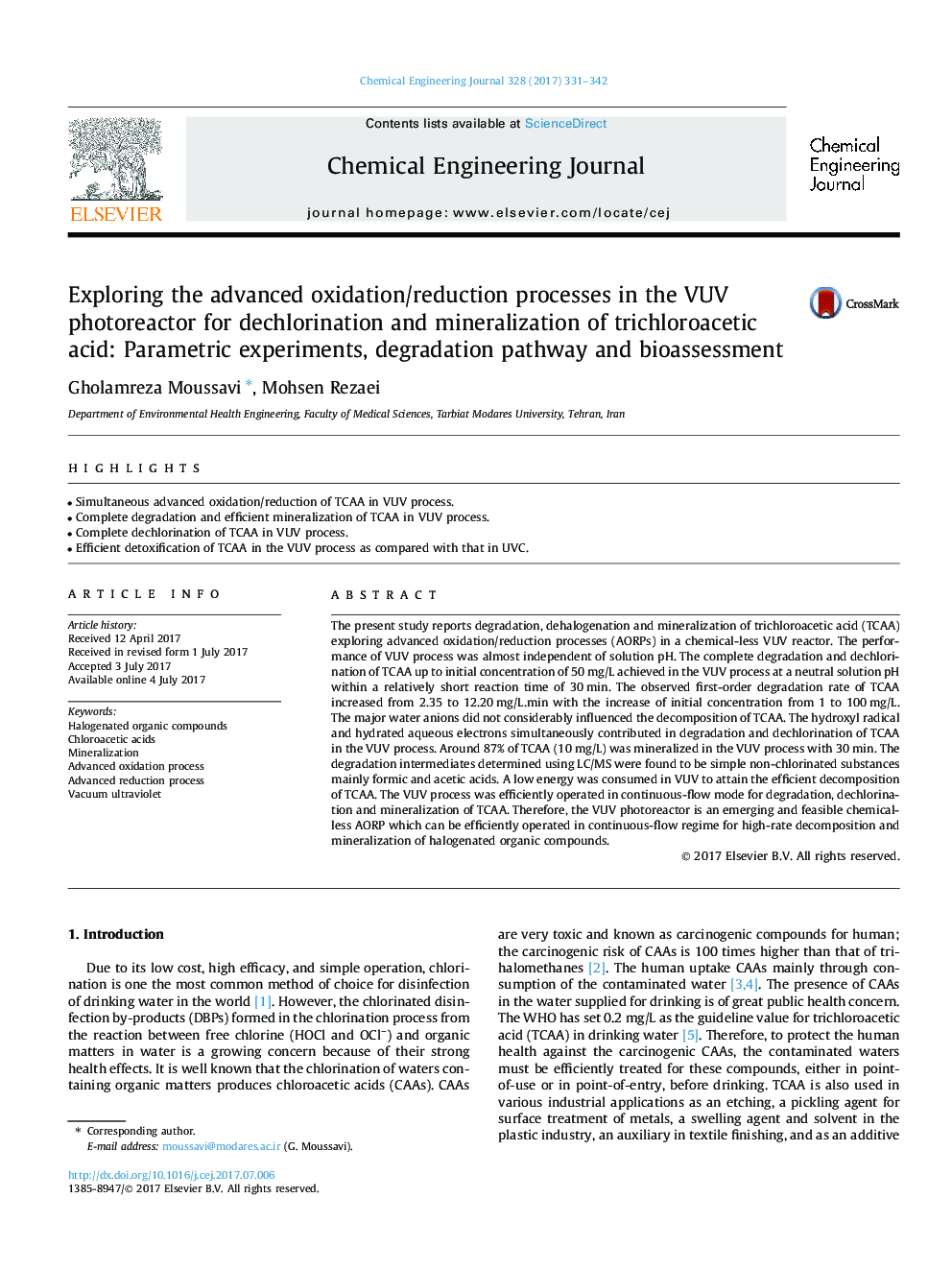| Article ID | Journal | Published Year | Pages | File Type |
|---|---|---|---|---|
| 6465235 | Chemical Engineering Journal | 2017 | 12 Pages |
â¢Simultaneous advanced oxidation/reduction of TCAA in VUV process.â¢Complete degradation and efficient mineralization of TCAA in VUV process.â¢Complete dechlorination of TCAA in VUV process.â¢Efficient detoxification of TCAA in the VUV process as compared with that in UVC.
The present study reports degradation, dehalogenation and mineralization of trichloroacetic acid (TCAA) exploring advanced oxidation/reduction processes (AORPs) in a chemical-less VUV reactor. The performance of VUV process was almost independent of solution pH. The complete degradation and dechlorination of TCAA up to initial concentration of 50Â mg/L achieved in the VUV process at a neutral solution pH within a relatively short reaction time of 30Â min. The observed first-order degradation rate of TCAA increased from 2.35 to 12.20Â mg/L.min with the increase of initial concentration from 1 to 100Â mg/L. The major water anions did not considerably influenced the decomposition of TCAA. The hydroxyl radical and hydrated aqueous electrons simultaneously contributed in degradation and dechlorination of TCAA in the VUV process. Around 87% of TCAA (10Â mg/L) was mineralized in the VUV process with 30Â min. The degradation intermediates determined using LC/MS were found to be simple non-chlorinated substances mainly formic and acetic acids. A low energy was consumed in VUV to attain the efficient decomposition of TCAA. The VUV process was efficiently operated in continuous-flow mode for degradation, dechlorination and mineralization of TCAA. Therefore, the VUV photoreactor is an emerging and feasible chemical-less AORP which can be efficiently operated in continuous-flow regime for high-rate decomposition and mineralization of halogenated organic compounds.
